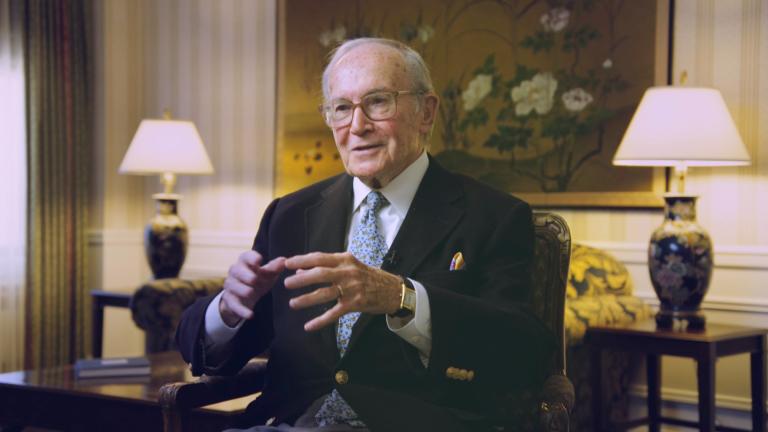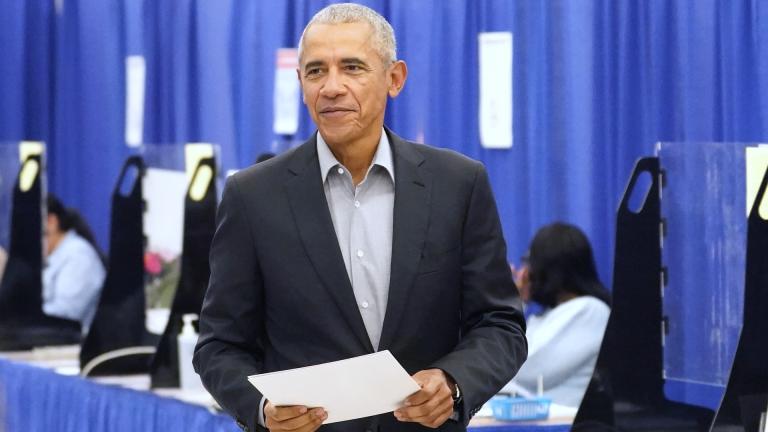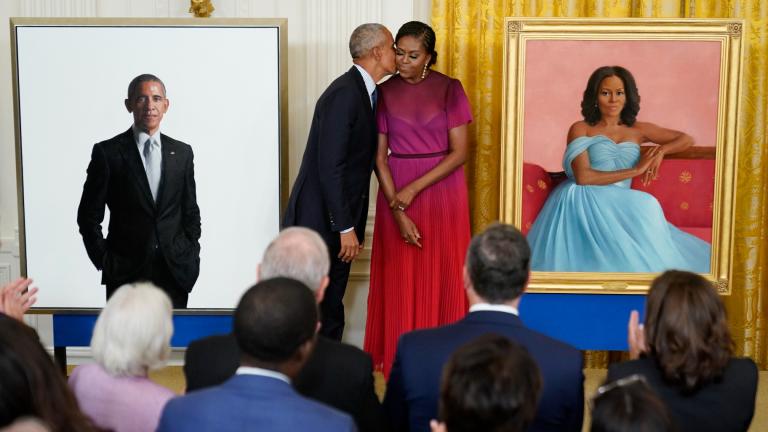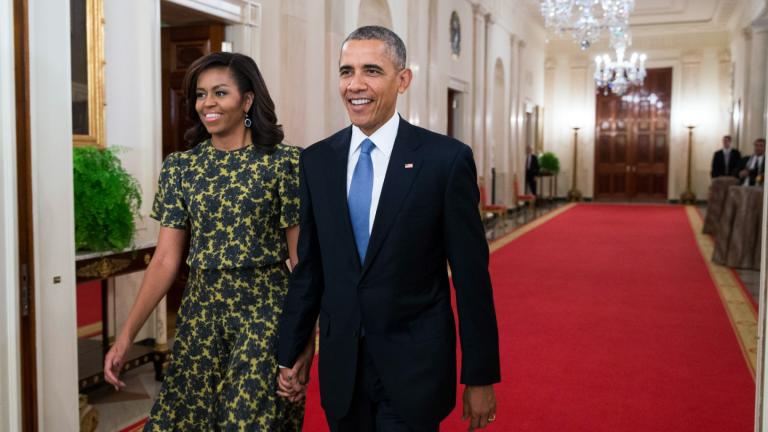Watch the video: After years of talk about climate change, President Obama finally unveils an ambitious plan.
President Obama on Monday unveiled his ambitious Clean Power Plan.
The new national standards aim to reduce carbon emissions by 32 percent by 2030 by shifting to renewable energy sources of wind and solar power. But energy industry opponents have vowed to litigate.
Joining us to discuss the new policy are Joe Condo, senior vice president and general counsel at Invenergy; David Kolata, the executive director of the Citizen's Utility Board; and Steve Goreham, the executive director or the Climate Science Coalition of America and author of The Mad, Mad, Mad, World of Climatism.
Highlights from the discussion
The debate Monday shifted from such topics as global warming, to the effects of the plan on the cost of energy to consumers, and the legalities of the measure.
Under the plan, individual states will be required to meet carbon emission reduction standards based upon their energy consumption.
Kolata said that the bill should help make the cost of electricity in Illinois significantly lower.
“It’s a really good opportunity for the state of Illinois,” he said. “If we do what we should do – which is maximize investment in cost-effective energy efficiency and take advantage of some new technologies that the smart grid deployment, that’s undergoing in our state right now, will provide – this is an opportunity to actually save consumers some money.”
Goreham countered that electricity rates will increase as a result of the plan, and that its implementation "will not have a measurable effect on global temperatures."
When asked about the legality of the measure, Goreham said, “The Clean Air Act gives the EPA the power to set national standards for pollutants and also to regulate individual point sources. It does not give the EPA power to force a plan onto states, or have states submit their plan for their electricity systems. That, in the opinion of many, is beyond the scope of what is authorized by the Clean Air Act.”
Condo emphasized the future potential of the Clean Air Act and acknowledged the cost-effectiveness of moving away from coal-fired energy.
“The cost of renewable energy, wind and solar, is coming down exponentially,” Condo said. “And when you’re talking about new construction, as we go forward as a country, what are we building? What energy infrastructure are we building to meet the needs of the future? Renewable energy and state-of-the-art, gas-fired power plants are going to be the most cost-competitive way forward, clearly, as we look to meet these targets nationally over the next decade.”
Kolata agreed with Condo and said that future technologies are the key to saving consumers money.
“You have to start somewhere,” Kolata said. “I think that the science is in – global warming is real. But, even if it wasn’t, our message is – from a consumer’s point of view – the exact same policies that we should use to comply with the Clean Power Plan are exactly what we should do to make sure that we have the least-cost future for consumers. The future is one based on more distributed, renewable technology...smart grid-enabled energy efficiency...new technologies. These are things that Illinois is well-positioned to take advantage of.”
“We’re moving towards a low-carbon energy future and a low-pollutant energy future. Clean energy is where this country is headed, it’s where the world is headed,” Condo said. “And I don’t think the purpose of the Clean Power Plan is to be the ‘death nail of coal,’ I think it’s to move us towards a future where our energy is generated in a way that pollutes our environment less.”
Goreham said that the State of Illinois gets about 45 percent of its energy from coal and that renewable energy has proven to be costly in other areas of the country.
“The states that have renewable portfolio standards laws, for example, pay the highest electricity rates and we continue to subsidize wind and solar. If it is true that those are now competitive, then are you in favor of reducing and eliminating the subsidies?” Gorham asked.
Discussion highlights represent a condensed version of our panel discussion. Watch the video to see the full discussion.
Local reaction
Chicago Mayor Rahm Emanuel issued the following statement after President Obama's announcement:
“The Clean Power Plan presents a tremendous opportunity for the United States to deliver innovative solutions that cut carbon pollution from power plants while protecting public health, creating clean energy jobs, investing in renewable energy, and improving energy efficiency. President Obama, through this historic action from the Environmental Protection Agency, has delivered on his promise to protect future generations and address climate change. Smart mayors, governors and electricity producers will seize this opportunity to modernize our power system and achieve the economic benefits of improving public health and expanding the clean energy economy.”
Cook County Board President Toni Preckwinkle issued this statement in support of the plan. It reads, in part:
"I applaud the release today by President Obama and the U.S. Environmental Protection Agency of the Clean Power Plan, which sets flexible and achievable standards to reduce carbon dioxide emissions, and provides world leadership in avoiding the worst effects of climate change. Our County has already proven that significant reduction in Greenhouse Gas (GHG) emissions – while saving money -- is possible. Cook County reduced its emissions by 9 percent between 2010 and 2014 by upgrading heating and cooling systems, replacing lighting, and improving air ventilation units and controls. From 2010 through 2014, the County has decreased its emissions by 97,300 metric tons, equivalent to the annual emissions from 20,400 passenger vehicles."
Illinois EPA director Lisa Bonnett weighed in on the impact of the plan to the State of Illinois and issued the following statement:
“Illinois is evaluating the final rule. Illinois’ priority will be to ensure that our energy sector has the flexibility needed to meet the emission reduction limits under the Clean Power Plan, while providing residents and businesses with reliable and affordable electricity. Illinois is fortunate in that we have tremendous energy diversity, and we will want to leverage our strengths.”
Watch a video below of President Barack Obama's Clean Power Plan press conference.
Carbon Footprints
Greenhouse gases make the planet warmer by trapping heat. The largest human activity source of greenhouse gases comes from burning fossil fuels for electricity, heat and transportation, according to the EPA’s 1990-2013 Inventory of U.S. Greenhouse Gases and Sinks.
Responsible for about 82 percent of all greenhouse emissions in 2013, carbon dioxide is the primary greenhouse gas that is released through human activities in the U.S. The following chart lists the amount of carbon dioxide per million BTUs of energy for various fuels.
Most of the electricity in the U.S. is generated with fossil fuels. The following chart is based on a 2014 report by the United States Energy Information Administration on the sources of generating electricity in the U.S.








